Holly Street Fire Hall
Introduction
Text-to-speech Audio
The Holly Street Fire Hall has stood here since 1914 featuring a design intended to blend into the residential neighborhood with its red brick facade and columned wraparound porch, The building was originally known as the Eastland Fire Station and then as J.B. Richardson Engine Company No. 14. Holly Street Fire Hall suffered extensive damage from the March 2020 tornado that hit Nashville. Thankfully, it was able to be repaired and the grand re-opening ceremony took place in late July 2021. The building was listed in the National Register of Historic Places in 1982. The 100+-year-old building is the oldest fire station still in use in Nashville.
Images
Front of Holly St. Fire Hall in 1982; oval window in pediment temporarily removed (David Paine for NRHP)
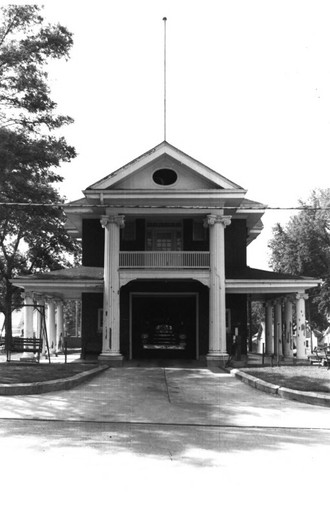
Holly St. Fire Hall ("Fire Dept. Eastland Station") drawn on 1914 Sanborn map from plans (Vol. 2 p. 331)
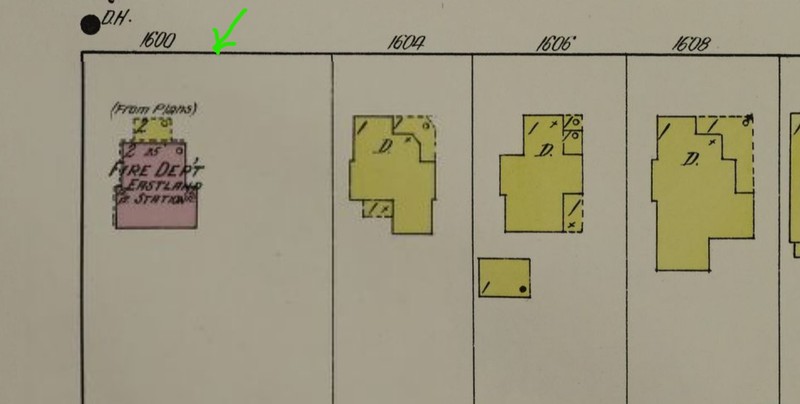
Columns on east side of wraparound porch at Holly St. Fire Hall in 1982 (Paine)
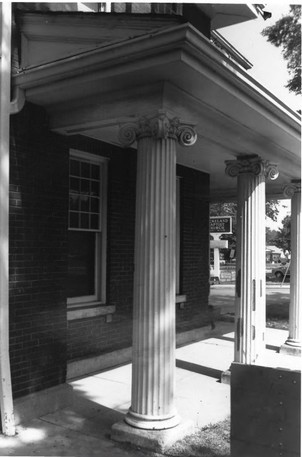
Holly St. Fire Hall with rear additions as of 1982, viewed across S. 16th St. (Paine for NRHP)
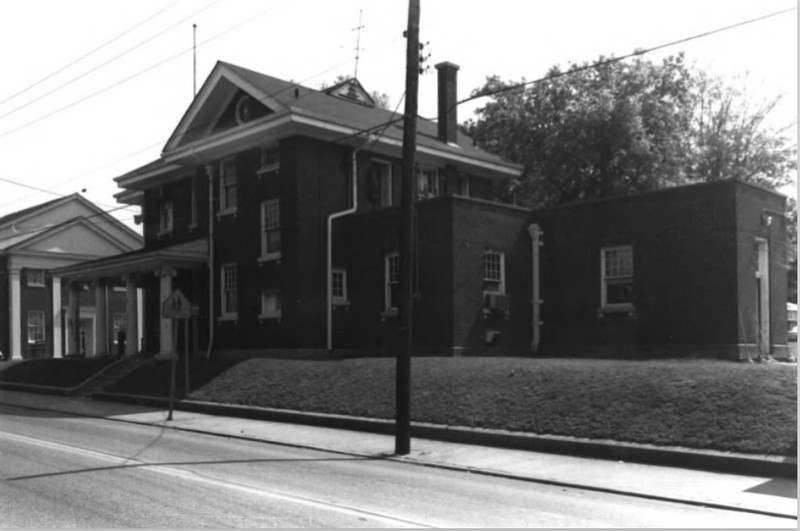
Formerly detached building at rear corner of lot in 1982; now is southwest corner of fire hall building (Paine)
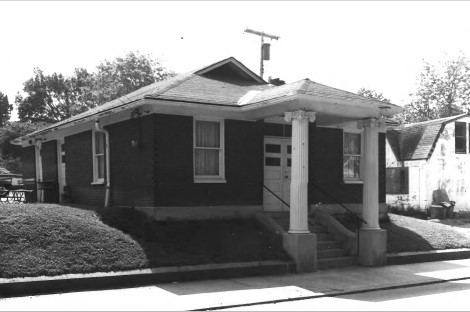
Backstory and Context
Text-to-speech Audio
The City of Nashville appropriated funds in 1913 to build two new fire stations in the suburbs. Locals east of the Cumberland River near Five Points formed the Lockeland Improvement League and were successful in landing one of the stations for their area. The J.B. Richardson Engine Company No. 14 officially went into service on October 1, 1914. The first fire chief at the new station was A.A. Rozetta. The Colonial Revival style station still serves the Lockeland Springs area of Nashville. The architect of the two-story building with a combination hipped and gable roof was James Yeaman, Nashville City Architect. The fire station was one of the first in Nashville to try to blend into a residential neighborhood instead of being a distinctive landmark.
The north (Holly St.) side is the main facade, with a driveway leading to the vehicular entrance. Two-story fluted tin columns support a pedimented gable with a second-story balcony above the driveway. The vehicular doorway to Engine Company No. 14 was built for motorized fire engines, since horses were being phased out. Earlier fire stations built for horse-drawn wagons were modified later for the new technology. Since fire trucks were smaller in the 1910s, many of today's fire trucks don't fit through the Holly St. Fire Hall opening. The engine company has adapted by using smaller trucks.
A hipped-roof addition was built onto the back of the fire hall in 1938, adjacent to S. 16th St. A flat-roofed, L-shaped second addition was built of brick onto the rear to hold kitchen space and additional storage lockers. At the far rear corner of the lot, at S. 16th St. at the alley, a one-story brick building was constructed next to the fire hall in the twentieth century for use as community meeting space. The Lockeland Springs Neighborhood Association was one of the groups that held meetings in the detached building by the early 1980s, when Fred Davis was fire chief at Holly St. Since the 1980s, a new addition connected the rear of the station to the formerly detached building, along the S. 16th St. sidewalk.
The station's namesake, J.B. Richardson, was a local businessman with a wholesale shoe and boot company. Richardson purchased the nearby Lockeland Mansion as a country home around 1890; he died in 1913, a year before this new fire hall opened. In 1922, the city was gifted a lot next to the fire station (along Holly St.) by local residents. Bass Park was established on the lot. Locals were instrumental in keeping the Holly St. Fire Hall open whenever proposals to close it were made.
The Nashville tornado of March 3rd, 2020 tore the roof off the building and broke many of the windows. To add insult to injury, the outset of the covid-19 epidemic soon after the storm disrupted efforts to rebuild. In the meantime, the building was boarded up and covered in tarps while the firemen found other space for their temporary home. Local residents, firemen, and the Mayor of Nashville celebrated with a ribbon-cutting on the repaired fire station in late July 2021.
Sources
Anonymous. Holly Street Fire Station celebrates reopening after 2020 tornado, News Channel 5 Nashville. July 30th, 2021. Accessed September 7th, 2022. https://www.newschannel5.com/news/holly-street-fire-station-reopens-in-nashville-after-2020-tornado.
Anonymous. Station 14 celebrates its 100th year, The News: Community News. October 8th, 2014. Accessed September 7th, 2022. http://www.gcanews.com/station-14-celebrates-its-100th-year/.
Lind, J. R. Damage and Destruction Sustained by Historically Significant Buildings, Nashville Scene. March 11th, 2020. Accessed September 7th, 2022. https://www.nashvillescene.com/news/coverstory/damage-and-destruction-sustained-by-historically-significant-buildings/article_5cb9aef9-776b-5bb9-9c17-b568d0e9993a.html.
Lockeland Springs Neighborhood Association. Then and Now: Holly St. Fire Station, LSNA-Nashville. April 4th, 2015. Accessed September 7th, 2022. https://lockelandsprings.org/then-and-now-holly-st-fire-station/.
Paine, David. Reynolds, Ann. Wells, Judi. NRHP Nomination of Holly Street Fire Hall, Nashville, Tennessee. National Register. Washington, DC. National Park Service, 1982.
National Park Service (NPS): https://npgallery.nps.gov/AssetDetail/NRIS/82003963
Library of Congress (LOC): https://www.loc.gov/item/sanborn08356_007/
NPS: https://npgallery.nps.gov/AssetDetail/NRIS/82003963
NPS: https://npgallery.nps.gov/AssetDetail/NRIS/82003963
NPS: https://npgallery.nps.gov/AssetDetail/NRIS/82003963
